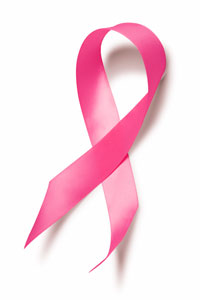
Pinkwashing (breast cancer)
Pinkwashing is a form of cause marketing that uses a pink ribbon logos. The companies display the pink ribbon logo on products that are known to cause different types of cancer. The Pink ribbon logo symbolizes support for breast cancer-related charities or foundations.[1]
Not to be confused with Pinkwashing (LGBT).The term 'pinkwashing' is associated with companies that use the pink ribbon symbol or use the support of breast cancer charities as a marketing technique, to promote one of their products, while at the same time manufactured products have proven to contain ingredients that are linked to the disease developed or are used in a manner that associates it with the increased risk of disease.
Origin of the pink ribbon[edit]
The pink ribbon first originated from a woman named Charlotte Hayley in 1992. Charlotte hand made and dispensed peach colored ribbons with informational cards that read " The National Cancer Institute annual budget is $1.8 billion, only 5% goes for cancer prevention. Help us wake up our legislators and Americans by wearing this ribbon".[2] Companies such as Susan G. Komen had used the ribbon but the ribbons became most popular when Esteé Lauder agreed to place the bright pink ribbon on all the products across the United States.